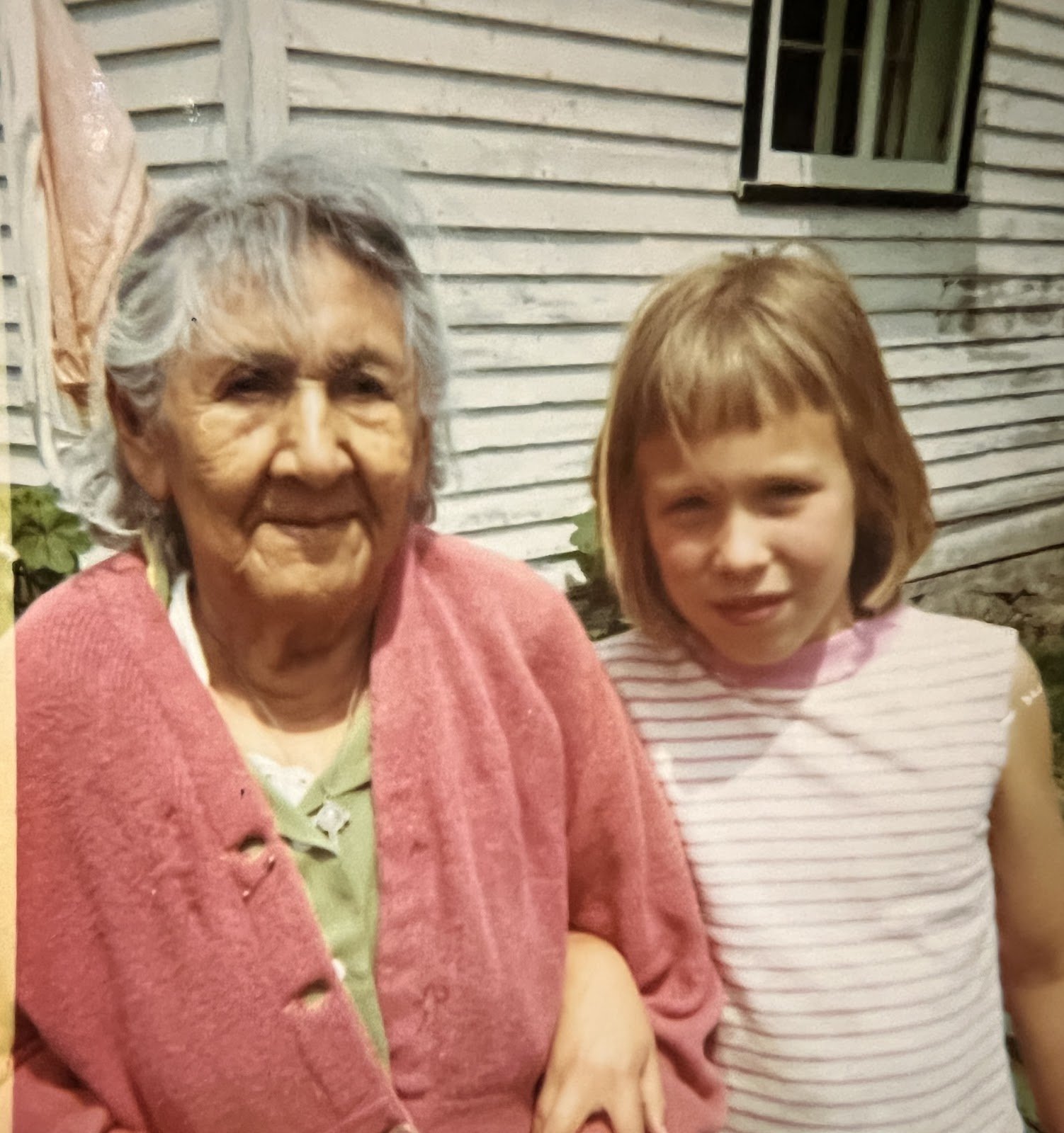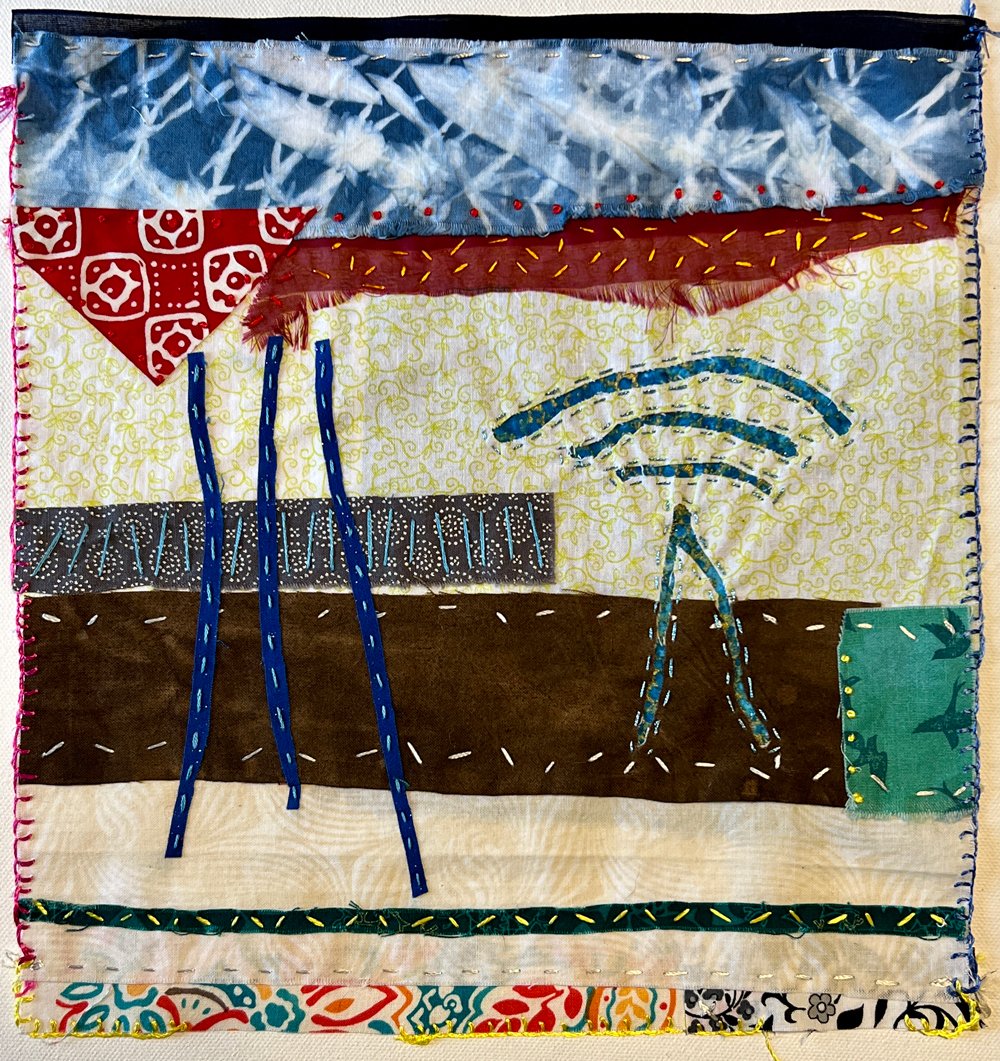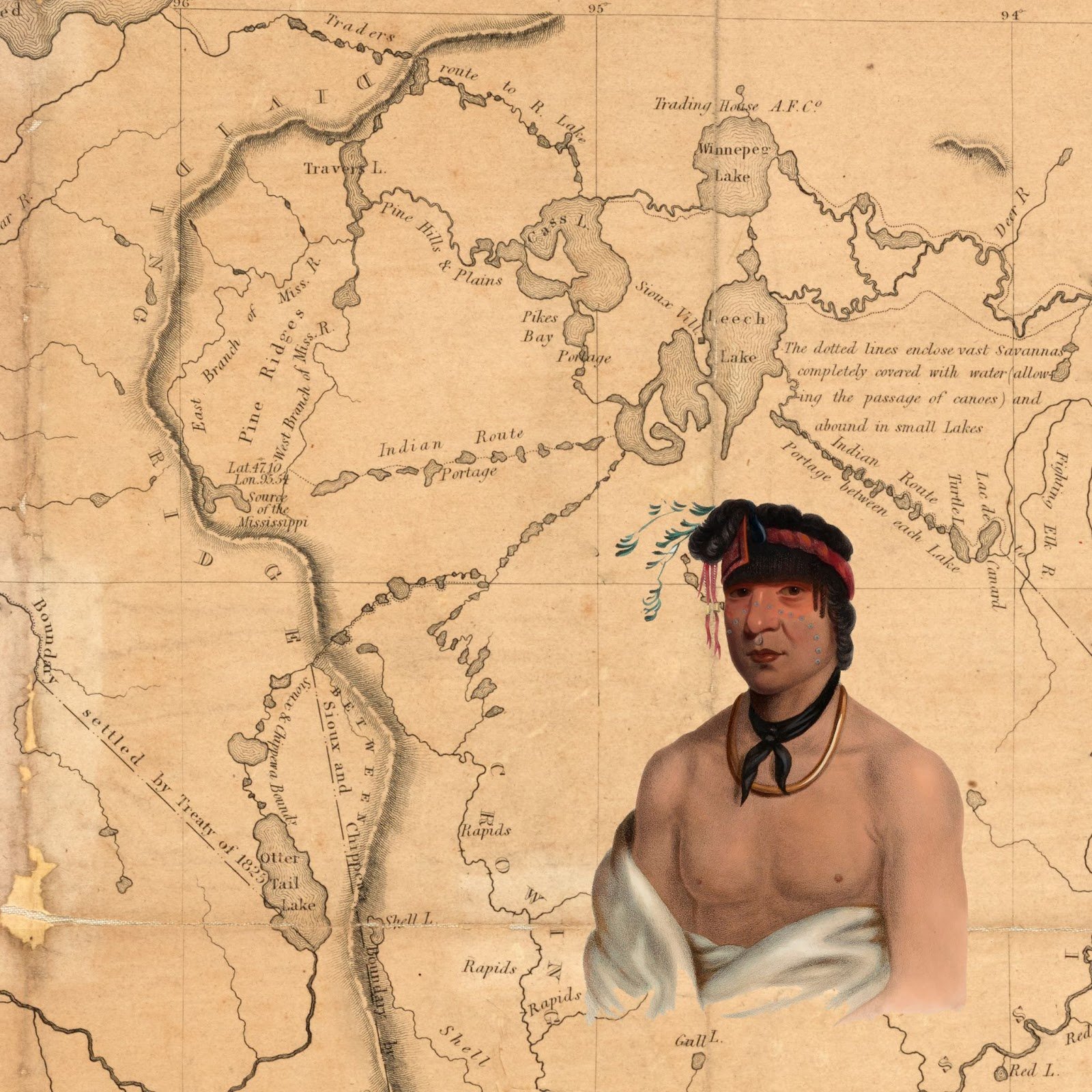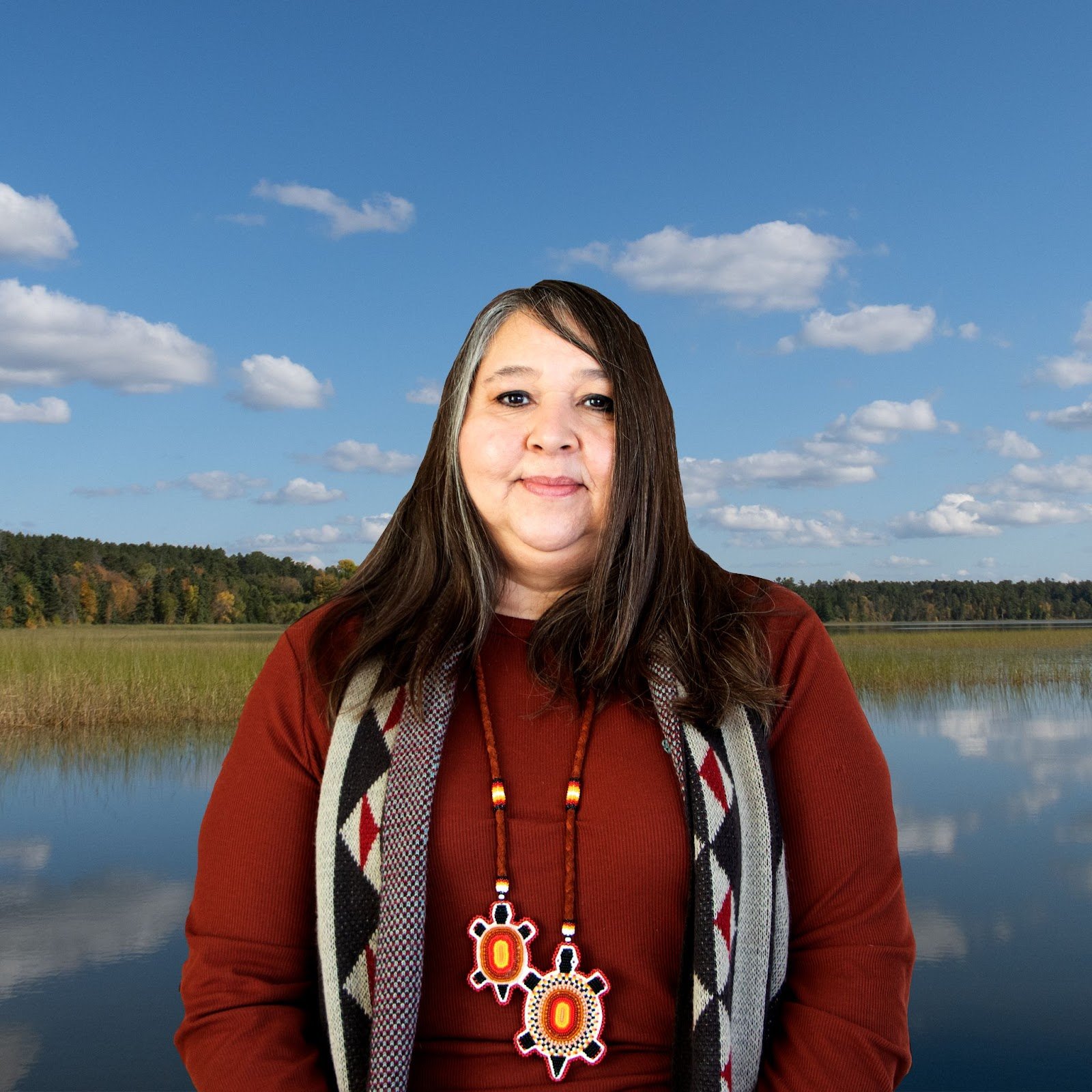A Big River Continuum
The following transcript is a panel discussion with artists Karen Goulet (White Earth Ojibwe) and Monique Verdin (Houma) and introduced by Curator-in-Residence at the Itasca Biological Station and Target Studio for Creative Collaboration, Rebecca Dallinger. The panel was convened under the direction of the Big River Continuum, a Mississippi-long artist residency exchange that amplifies the interconnectedness of cultures, research, water and land through collaboration, and organized by Boris Oicherman, Curator for Creative Collaboration at the Weisman Art Museum. From 2019 - 2022, the artists exchanged visits and held conversations about ways in which the rural Headwaters and the Delta have been in conversation with each other for thousands of years. - John Kim
Rebecca Dallinger
I never predicted that we would all go through a pandemic together and come to this place three years later, where we're still treating this process of what the bigger continuum is. Something we’ve ruminated on is that it is one thing to know about a river, and yet another altogether to consider the river itself as a way of knowing. As a curator who is new to curating, I have been brought into many worlds with tutelage from my mentor Boris Oicherman (Curator, Creative Collaborations at Weisman Art Museum), and through the guidance of artists Karen Goulet and Monique Verdin. I've been tutored as a curator in many different disciplines and ways of knowing from the cohort of people that are here. I just want to thank you all for this opportunity to do this work together and to keep building, because we're not alone. There are many river projects. There are many hubs of understanding.
I come from Ogema, Minnesota, with deep ties and connections to White Earth, to the people and the land in that rural part of Minnesota. Joe and I left the Twin Cities fifteen years ago to raise our daughters here, where they receive their teachings and where we're grounded. It's home, White Earth—-where the prairie meets the pines and where the headwaters of the Mississippi begins.
The biggest thing I've learned is just to bring forward and to honor everybody's gifts. Sometimes, that relatedness or relationship building can take years. Sometimes, it's not just a Zoom call. I think we've been learning what it means to have both these intense conversations and have deep meaning, but also to create ties and to be vulnerable with each other.
Karen Goulet
I'm Karen (Chi-binesikwe) Goulet, of the Bear Clan from White Earth, Gaa-waabaabiganikaag. This has been an amazing process, and I'm really grateful to everybody. I also want to thank the waters for helping support my work, and the Council for the Anishinaabe Arts Fellowship that I received last year, which allowed me to really dive in deeply into my creative process on this journey. I'm going to dedicate this to my father. Disclaimer, my mother gets the exhibit up in Bemidji.
My father was a scientist and an artist. This is where it all began. We spent a lot of time hanging out by fires and hiking around. His love of the land, his love of being alive. He was always a learner and a teacher. And these are my two sisters. My mom was often behind the camera.
Although I'm from White Earth, my father's also French Cree, from the Northern Ontario area. I grew up in Washington State, and we traveled a bit before we landed in North Central Washington. I asked my father why he chose that place. And he said, “Well, you know, there's pretty mountains and good hunting, and there's the lake, because your Mama needs the lake. Needs the water." That always stuck with me—-that there were these places, these requirements that were necessary for living a good life and being able to do the things you can do. Even though I did not grow up in our traditional communities, I grew up always knowing I was on Indigenous land, wherever I lived.
I remember we were looking for some petroglyphs, and he knew–and I don't know how he knew this, because it was before Grandfather Google. Somehow, he found these petroglyphs and took us to these places and reminded us that we've been here a long time. He's also the one that taught me to embroider and do hand stitching, things that I do in my work as an artist. So I'm really grateful for that.
This is me with Grandma Fish. This was a really significant moment in my life. She was actually my great, great aunt on my mother's side. We called her Grandma Fish, because she was a traditional net fisherperson. She would go to the lake every summer and go fishing. There were great stories about how she net fished until she was in her 80s I think, and when I met her she was 90 years old. She was a very strong woman. That was a tie that really rooted me to this place, to this part of the world.
This is the Jeffers Petroglyphs, a Thunderbird image, which is a metaphor that I use a lot in my work. I think about how we as humans have had a need to leave visual memory—-visual impressions—-for thousands and thousands of years.
This is “Spring Dances in the North.” It is one of the symbols of the thunderers that we use, and it is a really important time of the year for us. We celebrate those times of year. They're late in the spring and in the fall, when they go to rest and when they wake up and share things.
This is part of a series of thirty that's going to be up at Watermark. I never stop making them. It's a lot of hand stitching. It's a ceremony of remembering, because as I'm doing these pieces, I think a lot about the people that I come from, and all of the gifts that have been given to me. It's really important to continue the stories and to think about things and move them forward in time.
I went down to Arnaudville, Louisiana in the spring. Monique [Verdin] took me to the West Delta, where we had a fabulous time. It was just a whole other experience of the Mississippi, “The Great One.” It was very much a spirit and a presence for me, and I was really happy to get to see these places and know this other end of the river, and to get to know people from here. I'm sure I'll be going back.
I went out with one of my friends, Nancy Kingbird, and she drove around and told me her story. This is a little spot up North on the Leech Lake Reservation where we've traveled. I do a lot of photographs that inspire my work and feed me as well.
So this is getting to meet great people. This is up at Itasca. I got this wonderful shot of all the people that are walking down the river after visiting and having a day of connecting. Several of them are in the room.
This is a mixed media piece. It's called “The Mermaid Makes Her Map Home.” I've heard we have a Mermaid Clan as one of our clans. If so I'm quite sure I descend from them, because I love the water, and it’s such an important place.
The other thing I was able to accomplish was to finally finishing my poetry manuscript that's been in the works forever, so I’m going to fill in the rest of my time with poems.
The first poem I’m going to read is called “Watermarks.”
A soft voice masks the fierce currents
of desire and memory left behind –
in stories now told by shifting stones and riverbanks.
Forever bound and forever lost to each other
these forces
surrender what they cannot hold
to the river currents
that answer only to movement and change.
How do we find the rest of who we are—
now lingering in the residue of other more tumultuous days?
The changing truth of our existence
finds clear and mutable reflections
in the countless lakes and rivers moving steadily
beneath sensuous skies—-
their constant gestures render earth
into a damp landscape of prolific vegetation
and subtle terrain.
This evening the waters are radiant as they reflect
everything they see—
a flowing story that somehow satiates the moments
of longing that rest silently between us.
Before it is too late, I will tell you how the waiting has filled me today.
It is a relentless absence
the kind described
in the humid sighs of a heaven suspended
above the anticipation
of a dry earth
calling to the summer rain it longs for.
Relief is a thick and sultry presence sensed long before its occurrence.
Ancient sounds spill into the landscape of my hunger
as a storm announces its intended arrival
with a resonance that assures
the inevitable rain
and turbulence it will bring
—and yet at this moment
in a tenuous calm near the edge of the storm
it is the sun resting serenely on the water
that allows me to see the many reasons
why we are still here.
This one is called “Wild Rice Bread (and the evolution of a water story).”
This story was given to me by a friend from Guatemala, over a bowl of soup and warm bread.
“Remember the women of the Maya.
They are the ones who cultivated the maize from grasses…
I have been told it took centuries to evolve this essential grain
And it is the result of generations of commitment and love.”
I am reminded of our history in the North,
the many journeys of departure and return to the “food that grows on water”
and in the fragrance of the soup there is a new concept of understanding and time…
My uncle’s sustaining, award-winning, pulls-groans-and sighs-from-those-tasting-it-warm-from-the-oven wild rice bread.
Moist, dense, and complex, made of European grains and our traditional food that he helped to harvest from the water—-it is a culinary expression of his Ojibwe and Finnish life.
This bread has been made and shared many times, and his memory is remade in each making. I eagerly anticipate the process of boiling the rice, mixing ingredients, and kneading, shaping, and baking the loaves. Each step requires certain attention for a successful result. I am always happy to share this labor of understanding with friends and comrades when we gather to make history, beauty, and change. This breaking of bread fills and renews us—it is the most universal of rituals and so much can be realized in the sharing of a meal.
Always the manoomin is present; in soup, at breakfast with maple syrup, hiding in the cupboard, or eaten plain with a little bit of grease to keep the wiindigoo away.
My mother now lives out West, near one of the cleanest most beautiful lakes on earth.
She has nested by this water for over forty years, growing squash, berries, and other essentials. She swims every summer when the lake warms up, and always has wild rice in her cupboard. She has her connections “back home” in Minnesota, and replenishes her supply every year. She knows who sells it clean, the proof of proper preparation. I will not tell you where she hides it; this would be breaking sacred trust. Just know it is as essential to her life today as it was to her father and to the ones before them.
I remember the summer my papa discovered an isolated stand of wild rice in some mountain lake in Idaho: a gift carried by fowl traveling from the Midwest the year before. He was excited, and with his own version of ricing sticks, took his canoe and went back to gather the rice at just the right time. I still marvel at the accuracy of his instincts and memory. It had been decades since his childhood living in the Boundary Waters. We processed the rice in the living room and kitchen at home. With no birch bark in the dry of eastern Washington, we resorted to blue tarps and a fan for winnowing the grains. Improvising is essential to adaptation and survival.
We must always remember how it was
keep the stories new, remember to live in balance,
improvise when something is not available, and always return to that which
sustains us.
It is critical to hear what others have done to find our own solutions.
We, who understand and commit ourselves to the earth’s repair, are
being asked to give
to a future we will not be part of, except in the stories our
descendents will tell—
stories about the work we have done,
stories told over meals made of recipes still shared:
the ones enjoyed,
the ones passed on,
the ones that sustained us.
Monique Verdin
Hello. Bonjour. My name is Monique Verdin, and I'm really grateful to be with all of you here in this space and want to acknowledge all of your ancestors and my ancestors that have made it possible for us to be here. I also give so much gratitude to the Mississippi River for continuing to show me amazing people and beautiful places up and downstream. I’m so grateful for those words that Karen just shared. The river made us friends. Thanks to the Weisman and the Watermark. Really excited about what's being pushed out into the world right now, after a couple of years of meditation, conversations and travels.
So I am a lover of maps, even though I know they are the colonizers' tools. This part of the river is so different from downstream, and so beautiful. There's so much rich history being connected to Ojibwe communities and being able to participate in ceremony, to harvest wild rice, to be able to sit at kitchen tables and be welcomed in and laugh a lot. It's really changed my life in so many ways. Some of these maps that you'll see today are from around the 1830s. This is one that I found––I've been mining what’s in the public domain––in order to try to make sense of the past and present, and thinking about the future as well.
This map that you see here is from the so-called Headwaters. The portrait was painted by a man by the name of Charles Byrd King, who was hired by the United States Congress to make portraits of Indigenous people who were coming to Washington during Indian removals and during the times of creating treaties. I think it's really interesting, the visuals that are left behind. The history that gets told, the history that gets recorded, and the history that's considered truth. The invisibilized histories that we don't see—-some that are right in front of our faces with names of places, or names of rivers.
This person that Charles Byrd King painted was a leader at Leech Lake. And his son, Ozawindib, was a guide for Henry Rose Schoolcraft, who is the so-called founder of the Headwaters. But really it was Ozawindib and other Indigenous peoples, including Schoolcraft’s wife Jane and her family, who were mixed Ojibwe and European, who led Henry Schoolcraft to the Headwaters. This was the 1830s, when Manifest Destiny was happening, and they were trying to map the landscape.
Also on this slide are James Schoolcraft and George Bonga, who was part African, part Ojibwe, and helped to negotiate treaties in Washington at a time when Indigenous people had no voice and there was a huge move West. Then also Chief Bemidji, which is not his full name, but a shortened version that the settlers gave to him.
The first time I came up to the Headwaters was in 2019, before the world changed so drastically. The tamarack were changing colors. It was an amazing time. We don't have dramatic color change in South Louisiana. Wild rice ripe for harvest, and the tamaracks in the background. I've really been thinking about how to use maps as a base, then put photographs of place on top as a way of thinking about time in a different way.
This is from the end of the river, and actually was taken when I was on a river journey with John Kim, also in 2019. Shortly after I left the Headwaters, I ended up on a canoe with a bunch of strangers going through Cancer Alley in the most industrialized, super tanker-ridden part of the river. I got in the canoe, knowing that no one had done that part of the river before. In South Louisiana, people are like, "You don't go with the river. You don't put your big toe in the river.” Yet here we are paddling in Cancer Alley, and it was one of the most beautiful journeys of my life, even though it's riddled with industrial waste and lots of grain elevators. Lots of petrochemical plants, gross things, nuclear plants, what have you. The base image here is a map. It's like a map from the War Department that is also from that same time in the 1830s.
This is the end of the river. The Mississippi as you all know, is basically in a straitjacket since it was levied after the 1927 flood. It just empties into the Gulf of Mexico, where we have these huge algal blooms because of all of the runoff coming from the Midwest. We're making the petrochemicals for the fertilizers, and they come back from upstream. But I got a chance to go to the mouth of the river, which I had never been to before. The Eads Jetties.
This is, of course, the beautiful Lake Itasca in the fall. Here, I got to experience Minnesota winter, which was in the spring. But for me, it was the coldest I've ever been in my life. I was so happy that Karen gave me a nice coat and some very warm shoes. But yeah, when I first came up, I said I wanted to experience all of the seasons in this place, because they are so different. It was early March.
Here are two really beautiful human beings that I have so much respect for. And again, I've been playing a little bit with these digital collages of place and people. Dawn Goodwin is a water protector who's been holding the line, trying to hold back the line, which is ongoing work. Of course, the pipelines continue to be pushed through Indigenous territories, crossing the Mississippi River watershed up and downstream. On the other side is an Elder, a teacher, my mentor, my guide. [Anesie] Verdin. He passed in November. But this little rock was from 2010 and the B.P. drilling disaster. We had gone to Washington to lobby. I don't know if that stuff works. It felt really silly being there. My cousin had never flown on a plane his entire life. He's a shrimper, a fisherman; he lives down the Bayou. At that time, he was just starting to really feel the effects of esophageal cancer. They had these symbols of oil from the Gulf that we were delivering to senators, "Hey, can you do something?" It just seemed so bizarre. National Ice Cream Day was going on that day, and all these well-dressed interns were eating ice cream.
Some of you may know this fact already, but South Louisiana is losing land at one of the fastest rates on the planet. When that statistic is thrown around, scientists kind of roll their eyes. But every 90 to 100 minutes, a football field or an acre of land is lost from South Louisiana. These oak trees are a symbol of that.
There's many different factors: sea level rise, the channeling of the Mississippi River with the levees, over 10,000 miles of canals dredged through the wetlands for oil and gas extraction and navigation, and subsidence, which is naturally happening because we're on some of the freshest land on the planet. It's really baby lands here—between five and 8000 years old.
This is life in the red zone. They're saying that by 2050 all of this land that's red will be lost if nothing is done. And, you know, there's a lot of plans out there. Louisiana has a master plan, which I say is a bad title in a place that’s riddled with a plantation history. There's efforts that are being put out there with lots of money, but we're running up against time because sea levels are rising. Shrimp season is opening this week—I was just at a boat blessing last weekend. South Louisiana is bringing in not only a lot of oil and gas, but also we have one of the largest fisheries. We have the largest fishery in the continental US. We compete with Alaska, but come on, that's like a whole other continent.
















